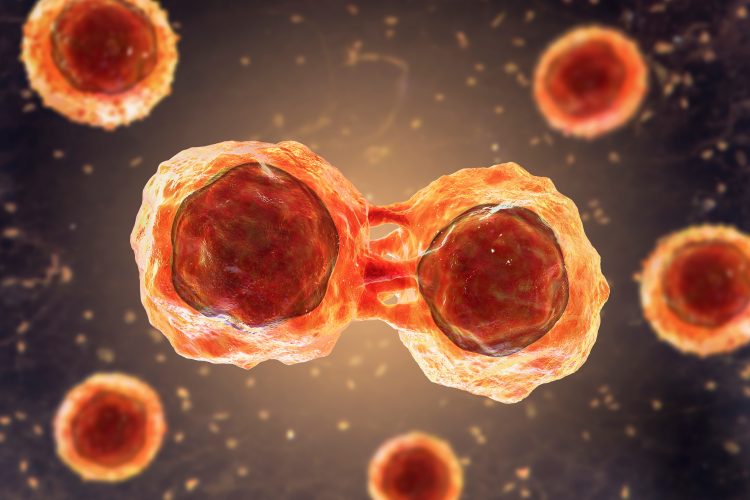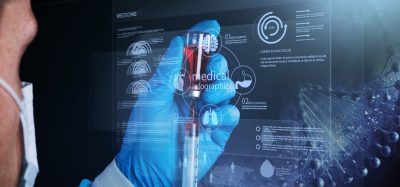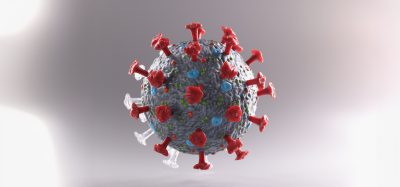The evolution of cell therapy to address unmet medical needs
Posted: 19 June 2024 | Brian Culley (Lineage Cell Therapeutics), Ellen Capon (Drug Target Review) | No comments yet
We had the privilege of interviewing Brian Culley, CEO of Lineage Cell Therapeutics. He discusses how Lineage’s pluripotent stem cell platform is extraordinarily advantageous, details two early-stage programmes addressing auditory and vision disorders and reveals how Lineage is choosing to target conditions that will make a real difference.


Could you give us an overview of Lineage Cell Therapeutics’ mission?
The mission of Lineage Cell Therapeutics is to deliver on some of the early promises of cell therapy. Cell therapy as a concept is a wonderful idea, but many of the early efforts never generated the kind of clinical data that gets people excited and leads to new medicines. Also, many companies never reached the point where they received validation from big pharmaceutical companies.
Lineage is different because our approach is more like a cell transplant, akin to making tiny pieces of organs or tissues. We have had incredibly exciting clinical data that can only be achieved with our approach, and we have a validating partnership in age-related macular degeneration with Roche and Genentech, which is one of the most successful companies working in ophthalmology. Our goal is to stand on the shoulders of giants and advance this exciting and new field of medicine, so that it can deliver valuable treatments to patients.
Could you give us an overview of the Lineage platform? By using pluripotent stem cell lines, what advantages does it offer?
Using pluripotent stem cell lines offers two very important advantages. One is that these pluripotent stem cell lines are self-renewing. That means as long as you feed the cells, they will continue to replicate, providing you with an endless supply of starting material. This provides some regulatory advantages, and of course, significant cost advantages.
The other powerful benefit is that our cell lines can become any of the cell types of the human body – these cells have within their DNA the capability to become any of the more than 200 human cell types which you might want to manufacture. The necessary information is retained within these cells, you just have to unlock it. So, we have highly scalable and affordable starting material which we pair with the ability to make any cell type you want. That is a powerful platform from which to design and test new therapies.
Regarding your ANP1 candidate, how many people worldwide are affected by auditory neuropathy spectrum disorders?
Auditory neuropathy spectrum of disorders is a fancy phrase for hearing loss, – so you would imagine this number’s going to be big and it is. It is estimated to include over four hundred million people worldwide. According to the American Academy of Audiology, people between the ages of 65 and 75 see it at a rate of 30 to 35 percent. It is striking, taking that decile of 65- to 75-year-old people, that a third of them suffer from hearing loss in in some form.
Therefore, the commercial opportunity for that programme is considerable. One of the few approved therapies that are available for these people are cochlear implants, but they are not used that often. Hearing aids also have all sorts of deficits. If we were able to manufacture replacement auditory neurons, which are the cells that are carrying the signal of information to your brain, and replace them to improve or preserve hearing, that would be an extraordinary advancement in the field.
What positive outcomes were observed in the initial preclinical results of ANP1?
So far, we have determined how to give the necessary instructions to the cells for them to become auditory neurons. Those are the cell which are vital to the act of hearing. We then began to deliver them into an animal model. Our main questions were, would they engraft? Will they survive? Will they migrate? Those are all necessary activities if you want to have functional improvement in a human. We were happy because we were able to see success in all those criteria. The cells went where we wanted them to go; they migrated a little bit; and they survived for a relevant period of time.
So, the next thing we want to do is ask the question: can they improve the hearing of animals? That is the focus of our current work. We are looking forward to moving that programme beyond the basic but necessary steps of delivering the cells and keeping them retained in the right place, and instead determine whether they are active? Do they affect the hearing capability of this species? That would provide wonderful information as we think about then going into a first-in-human clinical trial.
Regarding your PNC1 candidate, what conditions is PNC1 intended to treat?
PNC1 is our photoreceptor programme, studying rods and cones which are the cell types of the eye. There are many opportunities to address conditions of the eye, such as retinitis pigmentosa, dry age-related macular degeneration or any of the hundreds of inherited retinal diseases. Because this programme is still in early research, we are not at a point we can say we definitely know what it is going to work best in setting X or setting Y. We will develop that targeted strategy as we observe how the cells perform.
However, we do know that all those conditions, and in fact any condition that involves your eye, relies on the photoreceptor. The photoreceptor, like the auditory neuron, is pulling in a signal. In this case, it is a light signal instead of a sound signal and converting that signal into the brain. So, if we can replace those cells because they were never formed at birth or they were damaged along the way, we might be able to provide the function that the individual needs to preserve or improve their sight.
What promising in vivo data has been observed in the preclinical studies of PNC1?
It is very similar to the auditory programme. Our ability to manufacture those cells and to deliver them into animal models to see if they are residing in the right location, or if they are being rejected and cleared out by the animal, are the basic steps necessary prior to moving into functional models. However, there are a number of different functional models that one could imagine using for the replacement of photoreceptors, such as a suspension of cells on some sort of support or scaffold, or maybe in combination with other cell types like retinal pigment epithelial (RPE) cells, which are cells that speak to and interact with the photoreceptors.
So, we are taking the same journey in both our early-stage programmes, going through the necessary steps before asking the much more exciting questions about function and activity.
Do you have any plans to expand your pipeline?
Absolutely. We have made some expansions that have not yet been publicly disclosed, but as I said earlier, the capability within the pluripotent cell, by definition, is that it can become anything. You can imagine that we can essentially have a list of over 200 different cells that we could manufacture.
We look at that long list and ask which of the cell types looks attractive to us as a potential product. We would not want to be overly ambitious and go after something that is too difficult, so there are some logical choices, but we do want to expand the pipeline from what we already have ongoing.
Transplanting cells could prove to be more beneficial than treating a particular condition with a small molecule or an antibody, and that really speaks to the power of cell therapy. You are not addressing just one gene like in gene therapy, you are not addressing one pathway like a small molecule or an antibody – you are essentially fixing everything about the cell simultaneously. So, while cell therapy is more complicated and more difficult, it could be vastly more powerful.
How do you envision the future of cell therapy and its potential impact on medical treatments and healthcare?
Cell therapy is becoming a pillar of patient therapy, a pillar of medicine. Just like small molecules and antibodies, cell therapies are changing how we treat patients. The best example I would point to, because it has already happened, is in the setting of cancer. We already know that cell therapy has joined surgery, chemotherapy, and radiation as one of the pillars of cancer treatment. In some cases, cell therapy can be curative for the patient.
There now is a migration out of cancer treatment into other areas like diabetes, and of course vision disorders, which is a thing that we care about very deeply. As you see that transition of cell therapy into those large unmet needs beyond cancer, it represents a game changing opportunity for the field of medicine.
We cannot tackle all these conditions simultaneously, but we certainly want to look at some of the key ones like vision, hearing, or spinal cord injury and other areas that we think we can make a difference.
About the author


Mr Culley joined Lineage as Chief Executive Officer in September 2018 and served as Interim Chief Financial Officer from January 20, 2021 to June 21, 2021 and from July 8, 2022 to November 14, 2022.
Prior to joining Lineage, Mr Culley served from August 2017 to September 2018 as interim Chief Executive Officer at Artemis Therapeutics, Inc. (ATMS). Mr. Culley previously served as Chief Executive Officer of Mast Therapeutics, Inc. (MSTX), from 2010, and was also a member of its board of directors from 2011, until Mast’s merger with Savara, Inc. (SVRA) in April 2017. Mr Culley served from 2007 to 2010 as Mast’s Chief Business Officer and Senior Vice President, from 2006 to 2007 as Mast’s Senior Vice President, Business Development, and from 2004 to 2006 as Mast’s Vice President, Business Development. From 2002 until 2004, Mr Culley was Director of Business Development and Marketing for Immusol, Inc.
From 1999 until 2000, he worked at the University of California, San Diego (UCSD) Department of Technology Transfer & Intellectual Property Services and from 1996 to 1999 he conducted drug development research for Neurocrine Biosciences, Inc. (NBIX). Mr Culley served on the Board of Orphagen Pharmaceuticals, Inc. from May 2017 until December 2022.
Mr Culley has more than 30 years of business and scientific experience in the life sciences industry. He received a BS in biology from Boston College, a masters in biochemistry and molecular biology from the University of California, Santa Barbara, and an M.B.A. from The Johnson School of Business at Cornell University. Mr Culley brings to our Board significant knowledge of the biotechnology industry and extensive experience as an executive and board member of publicly traded pharmaceutical companies.
Related topics
Cell Therapy, Stem Cells, Translational Science
Related conditions
dry age-related macular degeneration, eye disease, Hearing loss, Retinitis pigmentosa
Related organisations
Lineage Therapeutics
Related people
Brian Culley (Lineage Therapeutics)








